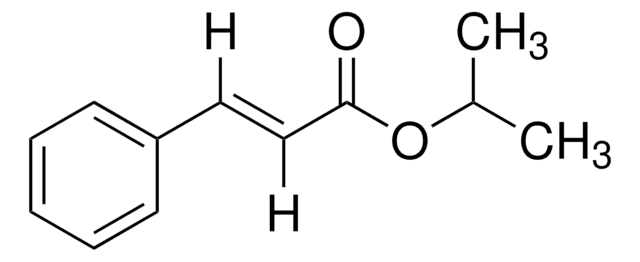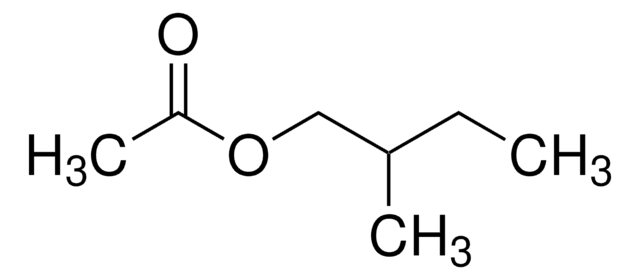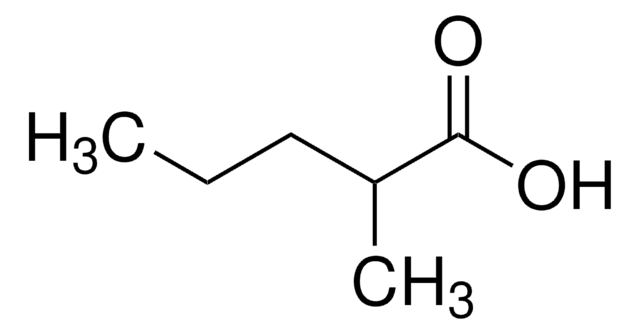About This Item
Recommended Products
biological source
synthetic
Quality Level
grade
FG
Halal
Kosher
reg. compliance
EU Regulation 1334/2008 & 178/2002
FCC
assay
≥97%
refractive index
n20/D 1.432 (lit.)
bp
98 °C/15 mmHg (lit.)
density
0.874 g/mL at 25 °C (lit.)
application(s)
flavors and fragrances
documentation
see Safety & Documentation for available documents
food allergen
no known allergens
organoleptic
apple; green
SMILES string
CC\C=C/CCOC(=O)CC(C)C
InChI
1S/C11H20O2/c1-4-5-6-7-8-13-11(12)9-10(2)3/h5-6,10H,4,7-9H2,1-3H3/b6-5-
InChI key
AIQLNKITFBJPFO-WAYWQWQTSA-N
Related Categories
signalword
Warning
hcodes
Hazard Classifications
Flam. Liq. 3
wgk_germany
WGK 2
flash_point_f
140.0 °F
flash_point_c
60 °C
Certificates of Analysis (COA)
Search for Certificates of Analysis (COA) by entering the products Lot/Batch Number. Lot and Batch Numbers can be found on a product’s label following the words ‘Lot’ or ‘Batch’.
Already Own This Product?
Find documentation for the products that you have recently purchased in the Document Library.
Our team of scientists has experience in all areas of research including Life Science, Material Science, Chemical Synthesis, Chromatography, Analytical and many others.
Contact Technical Service








